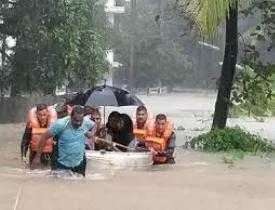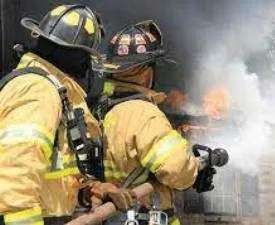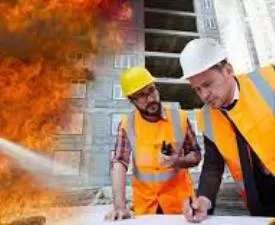Description
Course Name: Diploma in Health Safety & Environment Management
Course Id: DHS&EM/Q1001.
Education Qualification: 10th Pass.
Course Duration: 370 hrs.
How You will Get Diploma Certificate:
Step 1- Select your Course for Certification.
Step 2- Click on Enroll Now.
Step 3- Proceed to Enroll Now.
Step 4- Fill Your Billing Details and Proceed to Pay.
Step 5- You Will be Redirected to Payment Gateway, Pay Course and Exam Fee by Following Options.
Card(Debit/Credit), Wallet, Paytm, Net banking, UPI and Google pay.
Step 6- After Payment You will receive Study Material and Online Examination link on your email id.
Step 7- After Completion of Course Study give Online Examination.
Step 8- After Online Examination you will get Diploma Certificate soft copy(Scan Copy) and Hard Copy(Original With Seal and Sign).
Step 9- After Certification you will receive Prospect Job Opportunities as per your Interest Area.
Online Examination Detail:
- Duration- 120 minutes.
- No. of Questions- 60. (Multiple Choice Questions).
- 10 Questions from each module, each carry 10 marks.
- Maximum Marks- 600, Passing Marks- 40%.
- There is no negative marking in this module.
| How Students will be Graded: | ||
| S.No. | Marks | Grade |
| 1 | 91-100 | O (Outstanding) |
| 2 | 81-90 | A (Excellent) |
| 3 | 71-80 | A (Very Good) |
| 4 | 61-70 | B (Good) |
| 5 | 51-60 | C (Average) |
| 6 | 41-50 | P (Pass) |
| 7 | 0-40 | F (Fail) |
Benefits of Certification:
- Government Authorized Assessment Agency Certification.
- Certificate Valid for Lifetime.
- Lifetime Verification of Certificate.
- Free Job Assistance as per your Interest Area
Syllabus
Diploma in Health Safety and Environment Management
Introduction to Environment, Health and Safety Management
Occupation, Safety and Management; Occupational Safety, Health and Environmental Safety, Management – Principles & practices, Role of Management in Industrial Safety, Organization Behaviaraion Human factors contributing to accident. Planning for Safety: Planning: Definition, purpose, nature, scope and procedure, Education, Training and Employee Participation in Safety: Element of training cycle, Assessment of needs, Techniques of training, design and development of training programs, Management Information System: Sources of information on Safety, Health and Environment Protection, Compilation and collation of information, Analysis & use of modern methods of programming, storing and retrieval of MIS for Safety, Health and Environment. QCC HS Computer Software Application and Limitations, Concept for training, safety as a on-line function, Employee Participation: Purpose, areas of participation, methods, Role of trade union in Safety, Health and Environment Protection, Management by objectives and its role in Safety, Health and Management (SHE).
Occupational Health and Hazards
Occupational Health Hazards, Promoting Safety, Safety and Health training, Stress and Safety, Safety Psychology, Safety information system, Ergonomics – Introduction, Definition, Objectives, Advantages, Ergonomics Hazards – Musculoskeletal Disorders and Cumulative Trauma Disorders, Importance of Industrial safety. Safety of Environment,. Types and effects of radiation on human body, Measurement and detection of radiation intensity, Effects of radiation on human body, Measurement – disposal of radioactive waste, Control of radiation, Indian Standards, Electrical Hazards and Hazards in Construction Industry: Safe limits of amperages, voltages, distance from lines, etc., Joints and connections, Overload and Short circuit protection, Earthing standards and earth fault protection , Protection against voltage fluctuations, Fire and other Hazards: General causes and classification of fire, Detection of fire, extinguishing methods, fire fighting installations with and without water, Machine guards and its types, automation, High pressure hazards, safety, emptying, inspecting, repairing, hydraulic and nondestructive testing, hazards and control in mines.
Safety at Workplace
Safe use of machines and tools: Safe use of various types of hand tools used for metal cutting, torsion tools, shock tools, non sparking tools, portable power tools, Ergonomics of machine guarding, Guarding of different types of machinery including special precautions for paper, rubber and printing machinery, wood working, Plant design and Housekeeping: Plant layout, design and safe distance, Ventilation and heat stress, Significance of ventilation, Natural ventilation, Mechanical ventilation Air conditioning, Industrial Lighting: Purpose of lighting, Uses of good illumination, recommended optimum standards of illumination, Design of lighting installation, Standards for lighting and color. Testing and Maintenance of ventilation systems, Vibration and Noise: Vibration- effects, Measurement & control, Activities related to vibrations, its impact on human health, Sources. Industrial Noise- sources & its control, effects of noise on man, Measurement and evaluation of noise, Silencers, Practical aspects of control of noise.
Accident Prevention Techniques
Principles of accidents prevention: Definition: Incident, accident, injury, dangerous occurrences, unsafe acts, unsafe conditions, hazards, error, oversight, mistakes, etc. Accident Prevention: Theories / Models of accident occurrences, Principles of accident prevention, Accident and Financial implications, Theories and principles of accident causation: The effect of accident, unsafe act, unsafe condition, unpredictable performance, Human factors contributing to accidents – causes for unsafe acts, ii. Safety and psychology -Theories of motivation and their application to safety, First aid: Need of First aid. Body structure and Functions, Position of causality, the unconscious casualty, fracture and dislocation, Injuries in muscles and joints, bleeding, Personal Protective Equipment’s: Personal Protective Equipment’s: Need, selection, supply, use, care and Maintenance, Personal protective devices for head, ear, face, eye, foot, knee and body protection, Respiratory personal protective devices, Training maintenance, precaution and care of PPE, Detection equipment.
Safety Management System and Law
Legislative measures in industrial safety: Functions of safety management. ILO Convention and Recommendations in the furtherance of safety, health and welfare, Safety Management: Organizing for safety, Health and Environment, Organization: Structure, Function and responsibilities Safety Committee: Structure and function The competent person in relation to safety legislation – duties and responsibilities. Competence Building Technique (CBT), Concept for training, application of computer, multimedia, communication, directing safety: Definition, process, principles and techniques, Leadership – role, function and attribution of a leader. Essential rules in communication with employees with conducting training, team building and group dynamics, Procedures for compilation, utility and limitations of cost data, budgeting for safety, Financial cost to individual worker and family, organization and society, Relevance of WTO regarding safety, Health and environment, Employee participation in safety – Role of Trade union in safety, health and environment, Safety promotion and safety awards, safety, competitions.
Industrial Training and visits Report
Compulsory project on Industrial safety is to be completed and a report is to be submitted to the department, In-plant Training and Industrial Visits, In-plant training of 3 weeks is compulsory and a Report to be submitted to the Department with due Certification of the industry where training is done, Minimum 3 Industrial Visits are compulsory, Laboratory Work /Industrial Visits and Project Report : Laboratory work and a Compulsory project on Industrial training/ relevant institutional training/Consultancy training in authorized consultancies etc is to be completed and a report is to be Submitted to the department, Students will be admitted through a written admission test, the syllabus of which will be based on the common courses taught in the degree courses mentioned in the eligibility criteria. Students who are successful in the written examination will appear in an interview.








Reviews
There are no reviews yet.